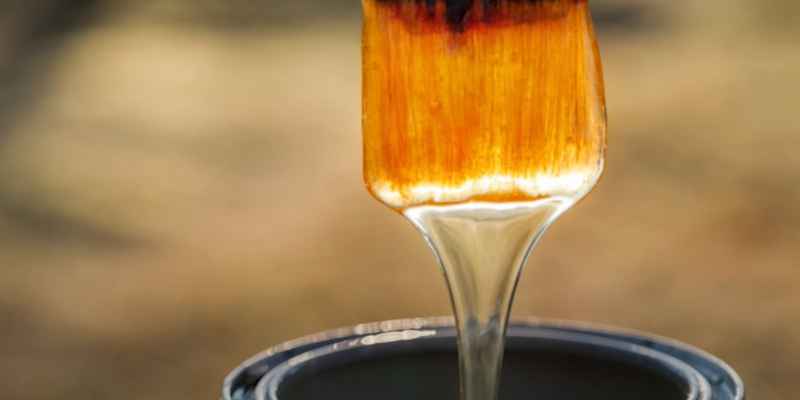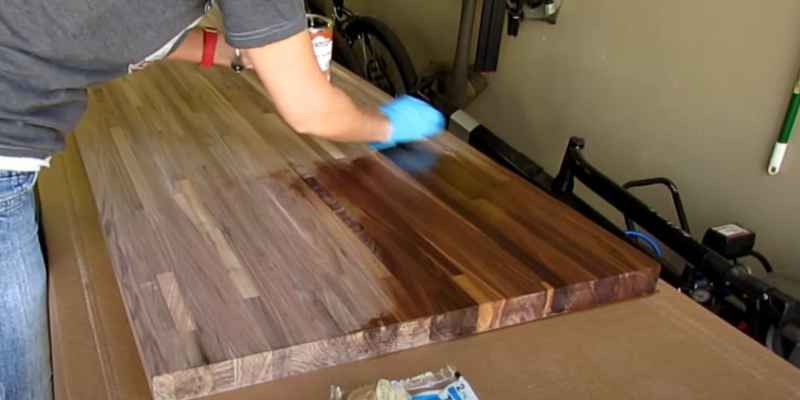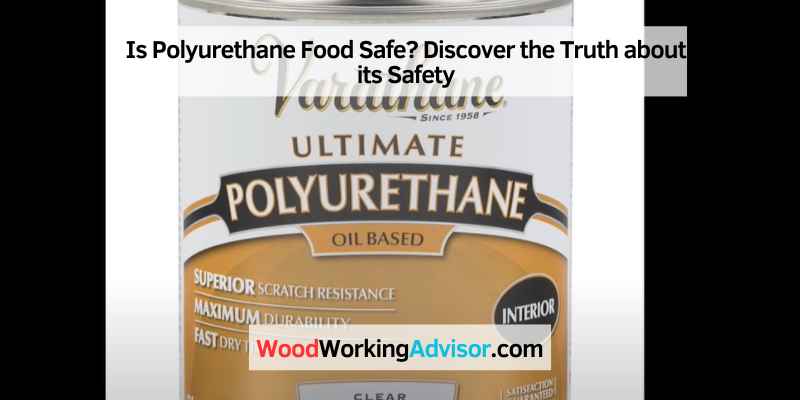Yes, polyurethane is generally considered food safe when it is fully cured and does not come into direct contact with food. Polyurethane is a versatile material commonly used for food packaging and storage due to its resistance to chemicals and ability to form a protective barrier.
However, it is important to ensure that the polyurethane coating or the surface it is applied to is specifically formulated for food contact and compliant with the relevant regulations and guidelines. This ensures that any potential migration of chemicals or contaminants is within acceptable limits, making it safe for use with food.
As such, it is crucial to choose food safe polyurethane products and consult with experts to ensure proper application and compliance with recommended safety measures.
What Is Polyurethane?
Polyurethane is a versatile synthetic material known for its durability. It is widely used in various industries due to its exceptional properties. Whether you realize it or not, you likely encounter polyurethane every day, as it can be found in a wide range of applications, from foam mattresses to paints, adhesives, and coatings. In this article, we will dive deeper into the composition and properties of polyurethane, as well as its common uses.
Composition And Properties
Polyurethane is a type of polymer that is created through a chemical reaction involving two main components: polyols and isocyanates. During this reaction, these components undergo a process called polymerization, which results in the formation of long chains of repeating units, giving polyurethane its solid and elastic nature.
One of the key properties of polyurethane is its exceptional resistance to wear and tear. It is highly durable and can withstand extreme temperatures, making it suitable for use in both indoor and outdoor applications. Additionally, polyurethane exhibits excellent flexibility and elasticity, allowing it to absorb shocks and vibrations, thus providing enhanced comfort and safety.
Another notable property of polyurethane is its resistance to chemical degradation. It is highly resistant to many solvents and chemicals, making it suitable for use in environments where exposure to such substances is common. This property also contributes to its longevity, as polyurethane is less prone to corrosion and degradation compared to other materials.
Common Uses
Polyurethane is utilized in a wide range of industries for various purposes. Here are some common applications of polyurethane:
- Flexible and rigid foams: Polyurethane foams are widely used in the manufacturing of mattresses, cushions, car seats, and insulation materials due to their excellent cushioning and insulating properties.
- Coatings and sealants: Polyurethane coatings and sealants are used to protect surfaces from damage caused by moisture, chemicals, and UV radiation. These coatings are commonly applied to floors, wood surfaces, and automotive vehicles.
- Adhesives and binders: Polyurethane adhesives are known for their strong bonding properties, making them suitable for applications such as laminating wood, joining metals, and assembling various products.
- Elastomers: Polyurethane elastomers, also known as urethane rubbers, are utilized in the production of gaskets, seals, wheels, roller covers, and other products that require elasticity and resistance to abrasion.
- Injection-molded parts: Polyurethane can be molded into intricate shapes, making it suitable for manufacturing various products such as panels, automotive parts, and medical devices.

Understanding Food Safety Regulations
Understanding food safety regulations is essential when it comes to ensuring the safety of the food we consume. With the increasing use of various materials in food packaging and preparation, it is important to determine whether these materials are safe for direct or indirect contact with food. In this section, we will provide an overview of food safety standards and explore the specific regulations that govern food contact materials.
Overview Of Food Safety Standards
Food safety standards are a set of regulations and guidelines established to protect consumers from potential health hazards associated with the handling, processing, and packaging of food products. These standards aim to ensure that the food we eat is safe, free from contaminants, and maintains its quality throughout the supply chain.
Regulatory bodies such as the Food and Drug Administration (FDA) in the United States and the European Food Safety Authority (EFSA) in the European Union play a vital role in developing and enforcing these standards.
Specific Regulations For Food Contact Materials
Food contact materials refer to any materials that come into contact with food during packaging, storage, cooking, or serving. These include containers, utensils, packaging materials, and various coatings used on surfaces.
| Regulation | Description |
|---|---|
| FDA Food Contact Substance Notification Program | This program requires manufacturers to notify the FDA about substances used in food contact materials and undergo an evaluation of their safety. |
| EU Framework Regulation | The European Union has established a framework regulation that sets out general safety requirements for all food contact materials. |
| Migration Limits | Regulations specify the maximum allowable migration of substances from food contact materials into food, ensuring that these substances are present at levels that do not pose a health risk. |
| Good Manufacturing Practices (GMP) | GMP regulations ensure that food contact materials are manufactured, handled, and stored under hygienic conditions to prevent contamination. |
These regulations aim to ensure that food contact materials are safe for use and do not adulterate the food they come into contact with. Polyurethane, as a commonly used material for food contact applications, is subject to these regulations to determine its safety for direct or indirect food contact.
Understanding these food safety regulations is crucial for both manufacturers and consumers to make informed decisions about the materials used in food packaging and preparation. By adhering to these standards, we can ensure the safety and quality of the food we consume.
Polyurethane And Food Contact
Polyurethane, commonly used in food packaging and utensils, is considered food safe due to its inert nature and low risk of chemical migration. Rest assured that polyurethane products are designed to meet stringent regulatory standards for food contact applications.
Polyurethane is a widely used material known for its versatility and durability. From upholstery to adhesives, polyurethane has found its way into various industries. However, when it comes to food contact, there are certain factors to consider. In this section, we will explore the different types of polyurethane and the potential risks and concerns associated with using it in food-related applications.
Different Types Of Polyurethane
Polyurethane can be classified into various types based on its chemical composition and properties. The most common types used in food-related applications are:
- Flexible polyurethane foam: This type of polyurethane is commonly found in food packaging and insulation materials. Its soft and cushiony nature makes it ideal for protecting delicate food items during transportation.
- Rigid polyurethane foam: Rigid polyurethane foam is widely used in refrigeration and insulation applications. It provides excellent thermal insulation properties, helping to keep food products fresh for longer periods.
- Thermoplastic polyurethane: Known for its high abrasion resistance and flexibility, thermoplastic polyurethane is often used in food-grade conveyor belts and seals. Its ability to withstand extreme temperatures makes it suitable for various food processing environments.
Potential Risks And Concerns
While polyurethane offers many advantages in terms of versatility and performance, there are some potential risks and concerns associated with its use in food contact situations. These include:
- Possible migration of chemicals: Depending on the composition of the polyurethane, there is a possibility of certain chemicals migrating from the material into the food. This can occur due to factors such as high temperatures or prolonged contact.
- Health implications: Some chemicals used in the production of polyurethane have been found to have potential health implications, especially if ingested in large quantities. This is why it’s crucial to use polyurethane materials that are specifically designed and tested for food contact purposes.
- Poor resistance to certain substances: Polyurethane may not be suitable for contact with certain acidic or fatty foods, as it may degrade or react chemically with them. This can affect the safety and quality of the food.
It is important to note that the risks and concerns associated with polyurethane in food contact situations vary depending on the specific type of polyurethane and its intended use. To ensure food safety, it is recommended to use polyurethane materials that comply with relevant regulatory standards and have been tested specifically for food contact applications. Regulatory bodies such as the Food and Drug Administration (FDA) in the United States provide guidelines and regulations for the use of materials in contact with food.
Testing And Certification
When it comes to using polyurethane in food-related applications, one of the main concerns is whether it is considered safe for contact with food. Testing and certification play a crucial role in determining the safety of polyurethane materials for such purposes. In this section, we will explore the standard tests used to determine food-safe polyurethane and the certification organizations and labels that ensure compliance with safety standards.
Standard Tests For Food-safe Polyurethane
Before polyurethane materials can be deemed safe for food contact, they are subjected to a series of standard tests. These tests assess various factors such as leaching of harmful substances, resistance to temperature changes, and overall durability. Some of the commonly used tests include:
- Migration testing: This test evaluates the potential for harmful substances to leach out of the polyurethane material and contaminate the food. It measures the transfer of substances such as heavy metals and plasticizers from the material to the food.
- Temperature resistance testing: Polyurethane materials used in food-related applications need to withstand a wide range of temperatures without degrading. This test examines the material’s ability to maintain its integrity and properties under extreme hot or cold conditions.
- Chemical resistance testing: Polyurethane may come into contact with various chemicals in food processing or storage environments. This test evaluates how the material reacts to different substances and ensures it remains safe and stable in such environments.
- Abrasion and impact resistance testing: Since polyurethane can be subjected to mechanical forces during food processing or handling, this test assesses its ability to withstand abrasion and impact without causing physical or chemical degradation.
- Microbial resistance testing: To ensure that polyurethane materials do not support the growth of harmful microorganisms, this test evaluates their resistance to bacterial, fungal, and other microbial growth.
Certification Organizations And Labels
Several organizations play a vital role in certifying polyurethane materials as safe for food contact. They establish guidelines, review test results, and grant certifications or labels that signify compliance with safety standards. Some of the well-known certification organizations and labels include:
| Certification Organization | Label |
|---|---|
| United States Food and Drug Administration (FDA) | FDA-approved |
| European Food Safety Authority (EFSA) | EFSA-approved |
| Japanese Polyurethane Industrial Association (JPIA) | JPIA-certified |
| Food Contact Materials Regulation (FCM) | FCM-compliant |
These certifications and labels provide assurance to consumers and businesses that the polyurethane materials they are using are safe and compliant with established food contact regulations. By looking for these certifications, individuals and companies can confidently select polyurethane products for their food-related applications.

Best Practices And Recommendations
Polyurethane is widely used in food packaging and preparation surfaces due to its non-toxic nature and resistance to chemicals and moisture. It meets the necessary safety requirements and regulations, making it a food-safe option for various applications.
Proper Handling And Storage
Polyurethane is a popular choice for food-safe coatings due to its durability and resistance to chemicals. However, it is crucial to follow proper handling and storage practices to ensure the safety of your food and to maximize the lifespan of your polyurethane products.
- Always handle polyurethane products with clean hands and avoid touching the surface that comes into contact with food.
- Store polyurethane items in a cool and dry place away from direct sunlight.
- Make sure you clean and sanitize polyurethane utensils properly before and after each use. Follow the manufacturer’s instructions for cleaning.
- Avoid using abrasive cleaners or scrubbers that can damage the polyurethane surface.
- Regularly inspect your polyurethane products for any signs of wear or damage. Discard any items that are cracked, chipped, or showing signs of deterioration.
- If you notice any unusual odors or tastes from your polyurethane items, discontinue using them and contact the manufacturer for guidance.
Alternatives To Polyurethane
While polyurethane is considered food-safe when used properly, some individuals may prefer to explore alternative options. Here are a few alternatives to consider:
| Material | Advantages | Disadvantages |
|---|---|---|
| Wood | Natural and eco-friendly, provides a traditional aesthetic. | Requires regular maintenance and can absorb flavors and odors. |
| Glass | Non-porous, easy to clean, does not impart any taste or odor. | Can be fragile and heavy. |
| Stainless steel | Durable, resistant to stains and odors, lightweight. | Can be noisy and may feel cold to the touch. |
| Silicone | Flexible, non-toxic, heat-resistant, and non-stick. | May retain some odor or color from certain foods. |
Remember, the choice of material depends on your personal preferences and usage requirements. Consider factors such as durability, ease of cleaning, and overall performance when selecting food-safe alternatives to polyurethane.
Conclusion
Polyurethane is a versatile material widely used in various industries, including food packaging and kitchen utensils. It has been tested and approved by regulatory bodies for its food safety. However, it is essential to choose food-grade polyurethane products and strictly follow manufacturer guidelines to ensure its safety.
Understanding the potential risks and benefits will empower individuals to make informed choices when it comes to using polyurethane in food-related applications. Remember, caution and knowledge are key in maintaining a safe and healthy environment for all.


